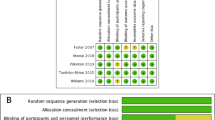Abstract
Background
In spite of decades of experience with the procedure, controversy persists as to the overall distress experienced by children and the routine need for sedation in children undergoing voiding cystourethrograms (VCUG). Many studies have attempted to address these issues, often divided into one camp that champions routine sedation while another group believes that pretest preparation is often all that is needed. At the root of these issues are some of the limitations of previous studies as most incorporate inherently subjective parental questionnaires to determine distress levels rather than using an objective, unbiased observer.
Objective
The objective of this study is to use a validated and reliable tool (the brief behavioral distress scale) to objectively evaluate the distress experienced during VCUGs.
Materials and methods
A prospective study of 26 children (ages 3-7 years old) was performed by the pediatric radiology department at a large urban academic medical center. Patients were evaluated for distress during 12 separate VCUG steps beginning with the patient entering the room and ending with the clothing being replaced at study completion.
Results
Using a general linear model (repeated measures analysis of variance (ANOVA)), significant distress was identified during two phases of the examination, catheter insertion (P-values ranging <0.001-0.19) and the full bladder phase (P-values ranging 0.005-0.043). The mean distress score for catheter insertion (mean: 1.38, standard deviation [SD]: 1.098) was nearly three times higher than the next most distressful step, i.e. full bladder (mean: 0.65, SD: 0.745). Additionally, entering the room was perceived as significantly more distressing than the catheter out (P = 0.016) and clothing replacement phase (P = 0.006).
Conclusion
We find that despite there being significantly increased distress during the catheter insertion and full bladder phases, the distress levels during VCUGs are markedly less than in previous reports. Even the most distressful stage, catheterization, was less stressful than previously reported with levels closer to that of minor distress evinced by comfort-seeking behavior from a parent rather than more significant distress resulting in screaming. Our findings corroborate and expand on the conclusion of the effectiveness of pretest preparation and child life specialist involvement.

Similar content being viewed by others
References
Phillips D, Watson AR, Collier J (1996) Distress and radiological investigations of the urinary tract in children. Eur J Pediatr 155:684–687
Phillips DA, Watson AR, MacKinlay D (1998) Distress and the micturating cystourethrogram: does preparation help? Acta Paediatr 87:175–179
Stashinko EE, Goldberger J (1998) Test or trauma? The voiding cystourethrogram experience of young children. Issues Compr Pediatr Nurs 21:85–96
Herd DW (2008) Anxiety in children undergoing VCUG: sedation or no sedation? Adv Urol: 498614
McGee K (2003) The role of a child life specialist in a pediatric radiology department. Pediatr Radiol 33:467–474
McQueen A, Cress C, Tothy A (2012) Using a tablet computer during pediatric procedures: a case series and review of the “apps”. Pediatr Emerg Care 28:712–714
Herd DW, McAnulty KA, Keene NA et al (2006) Conscious sedation reduces distress in children undergoing voiding cystourethrography and does not interfere with the diagnosis of vesicoureteric reflux: a randomized controlled study. AJR Am J Roentgenol 187:1621–1626
Elder JS, Longenecker R (1995) Premedication with oral midazolam for voiding cystourethrography in children: safety and efficacy. AJR Am J Roentgenol 164:1229–1232
Zier JL, Kvam KA, Kurachek SC et al (2007) Sedation with nitrous oxide compared with no sedation during catheterization for urologic imaging in children. Pediatr Radiol 37:678–684
Gerard LL, Cooper CS, Duethman KS et al (2003) Effectiveness of lidocaine lubricant for discomfort during pediatric urethral catheterization. J Urol 170:564–567
Stokland E, Andreasson S, Jacobsson B et al (2003) Sedation with midazolam for voiding cystourethrography in children: a randomised double-blind study. Pediatr Radiol 33:247–249
Coley BD (2012) VCUG and the question of sedation. Pediatr Radiol 42:284
Blumberg K (2012) Sedation and the VCUG. Pediatr Radiol 42:290–292
Tucker CL, Slifer KJ, Dahlquist LM (2001) Reliability and validity of the brief behavioral distress scale: a measure of children’s distress during invasive medical procedures. J Pediatr Psychol 26:513–523
Elder JS (2005) Imaging for vesicoureteral reflux--is there a better way? J Urol 174:7–8
Rao J, Kennedy SE, Cohen S et al (2012) A systematic review of interventions for reducing pain and distress in children undergoing voiding cystourethrography. Acta Paediatr 101:224–229
Lachenmyer LL, Anderson JJ, Clayton DB et al (2013) Analysis of an intervention to reduce parental anxiety prior to voiding cystourethrogram. J Pediatr Urol 9:1223–1228
Sandy NS, Nguyen HT, Ziniel SI et al (2011) Assessment of parental satisfaction in children undergoing voiding cystourethrography without sedation. J Urol 185:658–662
Gebarski KS, Daley J, Gebarski MW et al (2013) Efficacy of a cartoon and photograph montage storybook in preparing children for voiding cystourethrogram. Pediatr Radiol 43:1485–1490
Author information
Authors and Affiliations
Corresponding author
Ethics declarations
Conflicts of interest
None
Rights and permissions
About this article
Cite this article
Thacker, P.G., Collins, H.R. & Hill, J. Distress experienced during pediatric VCUGs – a granular, prospective assessment using the brief behavioral distress scale. Pediatr Radiol 46, 660–665 (2016). https://doi.org/10.1007/s00247-016-3540-z
Received:
Revised:
Accepted:
Published:
Issue Date:
DOI: https://doi.org/10.1007/s00247-016-3540-z




